Mel Torme’s Mel-Tones – Jazz In Five Voices
Among Jazz singers, there are a few who floated to the top and are remembered as some of the greatest who ever expressed jazz music through the voice. One member of that rarefied group would have to be the great Mel Torme’. We will surely do a proper retrospective on Mel at some future point, but this is the day to go back to his beginnings with the short-lived vocal group he led before embarking on a long solo career. Mel Torme’s Mel-Tones were far more influential than their short life as a group would suggest.
Mel Torme’ was born September 13, 1925 in Chicago. His father ran a dry goods store and his mother demonstrated new sheet music at Woolworth’s. Young Mel was a genuine musical prodigy who sang in front of a band at age four (yes, four) in a regular Monday night gig that netted him $15 per appearance. By age nine he had won a kids’ radio audition contest and became one of the busiest child radio stars in Chicago (when local radio was a much bigger thing than it was in later decades).
At fifteen he auditioned for the Harry James band (within a year after a young Frank Sinatra was hired away by Tommy Dorsey). Unfortunately, that arrangement was scuttled by the singer’s young age and the need for a touring tutor for high school classes. However, the kid wrote a song that James made into a moderate hit, called “Lament to Love”. At sixteen he was hired as a singer/arranger for a band put together by Chico Marx (of the Marx Brothers) and did some drumming for that organization too.
That exposure led to a small movie role in the 1943 Frank Sinatra film “Higher and Higher” (seventeen-year-old Mel’s thirty seconds of song starts right after the 30 second mark on this clip). Singer, songwriter, arranger, drummer and movie appearances by age 17 is unusual by any yardstick.
It was around that time that young Torme’ took charge of a small vocal group at Los Angeles City College, and thus “The School Kids” became “The Mel-Tones”. Besides leader/arranger Torme’, the Mel-Tones consisted of Betty Beveridge, Ginny O’Connor, Bernie Parke, and Diz Disruhd (soon replaced by Les Baxter). Torme’ once said that he arranged for the group much like he would for a big band’s saxophone section, with two altos, two tenors (Torme’ being one) and a baritone. The group got signed to Decca Records in 1944 and made a handful of sides (mostly as backing for other artists) before Torme’ was drafted.
A fluke in the system saw Torme’ back in civilian life after a few months – it seems that a foot injury led to a diagnosis of flat feet and a discharge. The Mel-Tones picked up where they had left off and saw the production of some “Soundies”, like this (colorized) one, “Back Home Again in Indiana” from 1945. One note – Because Mel Torme’ was still under contract with the RKO studio, he was prohibited from appearing on film in these Soundies. That is Bernie Parke lip syncing to Mel’s voice in the film, and the mystery dark-haired guy was brought in to add the fifth (silent) on-screen presence. Also, note that Torme’s arrangement took a song that dated to 1917 and reassembled it into something fresh and modern for the day.
“Close harmony” vocal ensembles had become a thing in the late 1930s with groups like The Modernaires and The Pied Pipers (who got late pre-war exposure with the Glenn Miller and Tommy Dorsey bands, respectively) and those groups inspired the Mel-Tones. Where the Mel-Tones distinguished themselves was in Torme’s arranging which treated the voices more like instruments than as a group of singers. There was also Mel’s experience as a drummer that gave the group a deep sense of rhythm and swing that was a cut beyond most other vocal groups at the time.
It was 1946 before Torme’s Decca contract was up and the group started to make records again. Part of that year saw the Mel-Tones as the featured vocalists with Artie Shaw’s postwar band. The mercurial Shaw had been through perhaps a half dozen band formulations by the time he formed this 1946 group. That band recorded on the obscure Musicraft label, which allowed musicians the luxury of artistic control, something far from universal in the recording industry even then.
Mel Torme’ and his Mel-Tones did vocal duty on several Shaw records that year, including this one. Cole Porter’s “What Is This Thing Called Love” highlights the Mel-Tones’ full toolkit, with some group scatting, some background flavor and some up-front vocals that meshed tightly with the instrumental parts of the arrangement.
I was going to stop with one Shaw record but am going to stretch and add a second. Where the first selection probably highlights the group’s full range of skills to maximum effect, “I Got The Sun In The Morning” is my favorite of all the Shaw/Mel-Tones efforts because of how Torme’ & Co. can stand their ground against Shaw’s powerful band in a joint effort that makes me smile every time.
At the other end of the spectrum, is “Willow Road”, also from 1946. This is one of Mel’s own compositions and one that shows the group’s ability to do a lovely ballad. Backed by the obscure Sonny Burke band (and also on the Musicraft label), performances like this were surely an attempt to reach some level of public popularity. The big band era was in a fatal swoon by then and singers were the big thing, so they went with the flow by Mel getting more solo time and the group receding into the background just a bit. For anyone not aware of Torme’s longtime nickname “The Velvet Fog”, this recording is as good an explanation as any.
Sadly, the Mel-Tones were never able to attain critical mass with the record-buying public and by 1947 Mel had been signed to a solo deal with Capitol Records. Those early solo recordings served as the launch pad for a long career that saw several crossings of the road between jazz and pop music.
The Mel-Tones (with Mel) hung on for awhile longer and when Torme’ was given an early television show by NBC in 1948, the Mel-Tones were featured in some of the performances. This audio from one of those 1948 episodes shows the group’s (and Mel’s) growth in the three years after those 1945 Soundies. This performance of “When The Red Red Robin Goes Bob Bob Bobbin” (that clocks in at a mere two minutes) is in a style that sounds much later than 1948, with some adventurous key changes and unexpected chords. In fact, it sounds a lot like Torme’s records from the 1950’s, one of his most creative periods.
Torme would re-form the Mel-Tones a time or two as late as 1959 when they recorded an entire album called “Back In Town”. By then there were several new vocal groups that took inspiration from the Mel-Tones with a style that was far more jazz than pop, including The Four Freshmen and The Hi-Los. Even later the Manhattan Transfer would pick up the baton and take ensemble jazz vocals into the 1970’s and 80’s.
The 1980’s saw a renewed burst of popularity for Torme’, in no small part due to the NBC comedy show “Night Court”. In that show, the lead actor (Harry Anderson) played a judge who loved nothing more than the music of Mel Torme’, and Mel made a handful of cameo appearances.
Mel Torme’s greatest legacy probably has nothing to do with his singing abilities. He was the writer (with lyricist Robert Wells) of “The Christmas Song”, which the pair worked up during a sweltering Southern California July day in 1946. You know it – it begins with “Chestnuts roasting on an open fire . . . .”
The early Mel-Tones have mostly receded into the mists but for the occasional Artie Shaw reissues. Of the other members, only Les Baxter had a significant musical career in later years – his band had a hit with “Unchained Melody” a decade before the Righteous Brothers remade it into a major hit in 1965. But despite their obscurity with the general public, this influential group put out some music that is both interesting and good, two things that don’t always go together.
COAL Update: This is the story of my first brand new car, that I was sure I would keep forever. Until I didn’t.

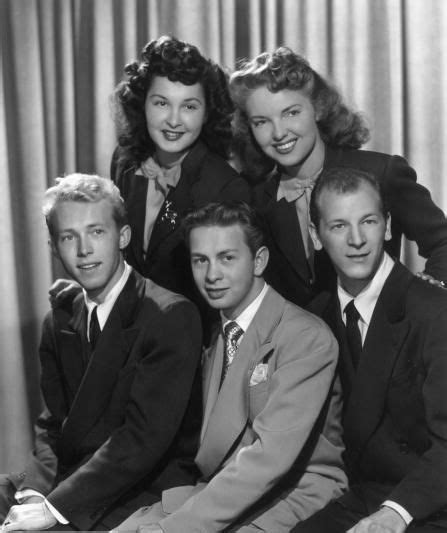
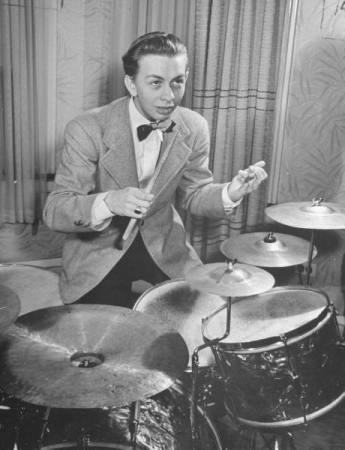
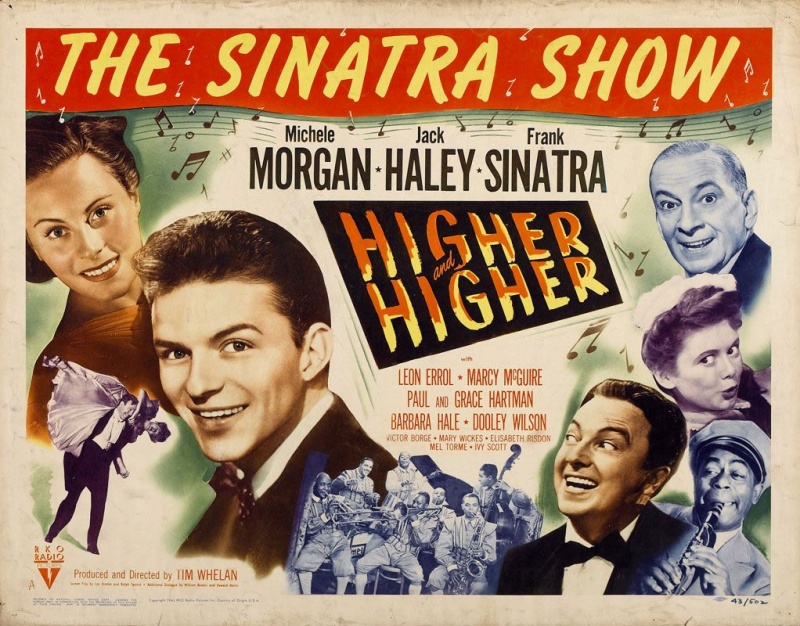
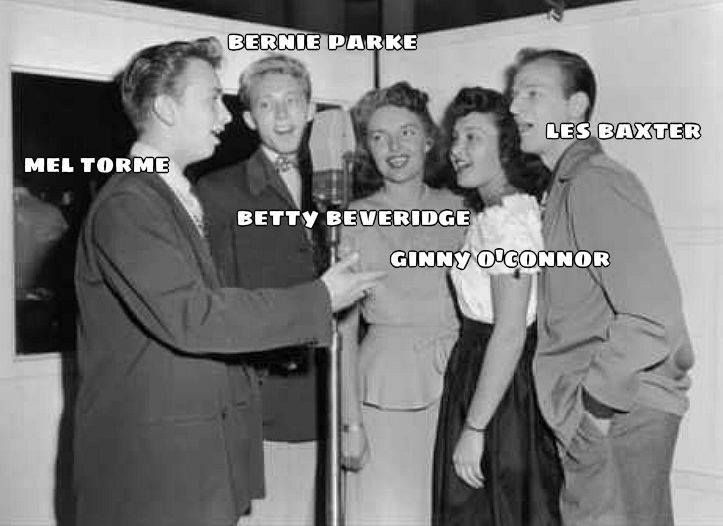
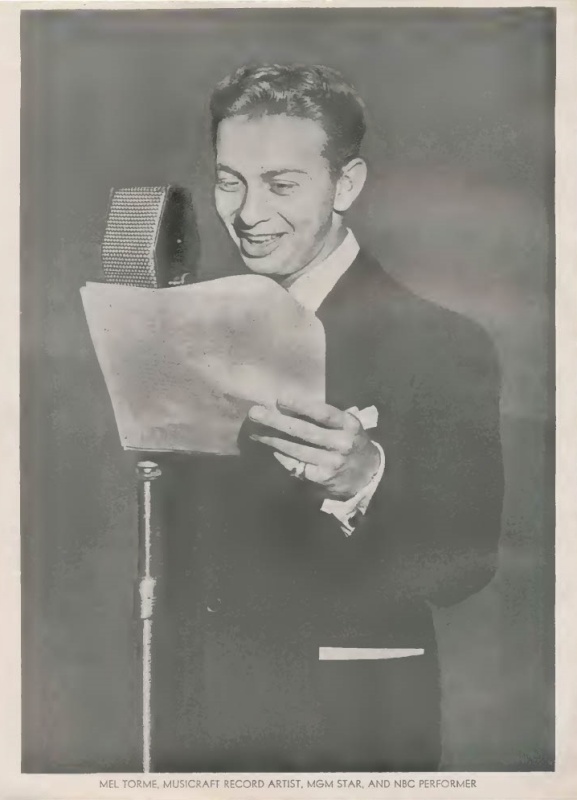
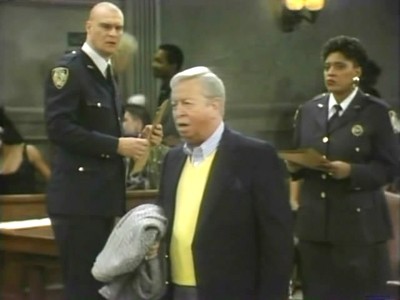
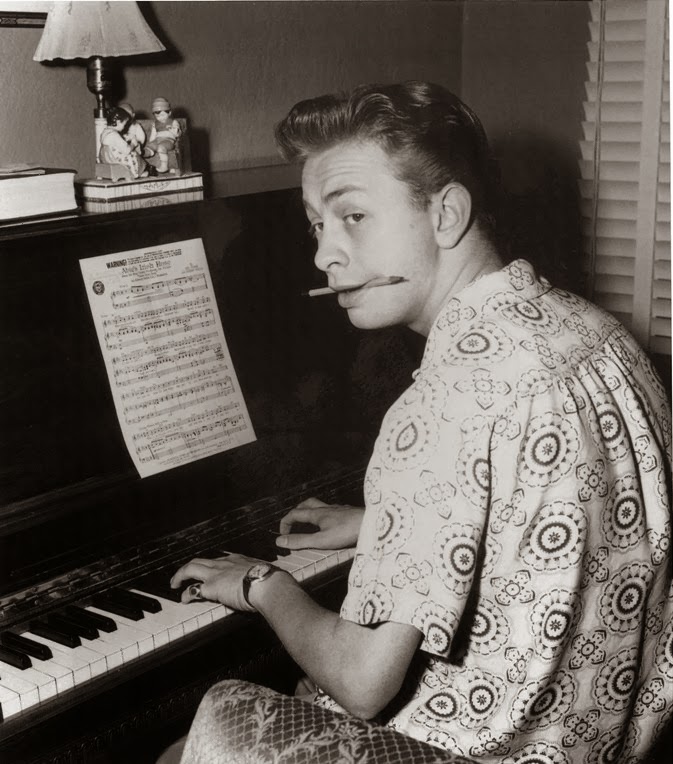
Great Friday entry on the Velvet Fog! Thought I recognized Les Baxter in that photo. Not only did Baxter’s career have some “legs” after the Mel-tones, his band took off with the “Exotica” craze of the 50’s and early 60’s, with albums like Carribean Moonlight and Space Escapade. Baxter was riding the “lounge music” craze with CD reissues in the 1990’s like The Exotic Moods of Les Baxter. He even had an African Jazz album! Les might need his own entry on how he got from the Mel-tones to that 50’s hipness!
LikeLiked by 1 person
Yes, I saw the opportunity to segue into an entirely different rabbit hole with Les Baxter. I also didn’t mention that Ginny O’Connor married Henry Mancini in 1947, but I don’t know what else she may have done.
Before researching this, I had never known what a wonder-kid Mel had been. It was only coincidence that Marianne and I watched “Higher and Higher” on TCM a few weeks ago. It was kind of fun, with a plot about a rich guy who has lost all his money and the household staff (who are owed a bunch of in wages) decide to pick one of their number to impersonate the guy’s daughter and marry a rich guy to save the family. I did not know at the time that Mel was only 16 when it was made.
LikeLike
Ditto! Only knew Mel as a singer, but did a little research in the “Night Court” years and was pretty flabbergasted at how much he was into. As my Dad told me one time, when it comes to music, if you follow the money, it always goes to the song writers and not the performers. i.e. if you have a long career and make decent money, you’ve got writing credtis somewhere back there….should have figured with Mel…
LikeLiked by 1 person
He probably could have retired on The Christmas Song.
LikeLike
I first met Mel on Night Court and at the same time, we had a friend who had grown up in the Big Band era and the Golden Age of Radio and learned more from him. Great links.
LikeLiked by 1 person
I’m not sure which came first, the Night Court publicity or the uptick in Mel’s popularity as a singer. He didn’t appear on the TV show often, and when he did it was mostly as a gag. But his name came up constantly in dialog.
As with several singers of his era, he struggled to stay relevant in the 1965-1975 period (more or less) but by the late 70s he was embraced as an elder statesman of jazz and did really great work in his later years. This really early stuff was a treat to dive into, though.
LikeLiked by 1 person
Both were interesting articles. It’s funny how we remember how much our first new car cost. 13K – mine was the 1984 Fiero. I saw it at a car show in the mall, but there was no bargaining as it was the first year they were made and there was only one allotted initially to each dealer, so I had to drive some distance to find a dealer. I ordered it in the fall, it came in in January and I drove it home when it was snowing and it was a horrible thing to drive in winter, but man it did look sporty. My friends were envious. And yes, never buy a car the first year it’s built. There were lots of recalls as I recall.
LikeLiked by 1 person
The Fiero was one of those cars that had loads of promise, but was let down by poor execution. The last couple of years they made them, the Fieros were quite appealing cars. But by then, word had gotten out about all of the problems and they were no longer so new and fresh.
LikeLiked by 1 person
…worked with a guy in Chicago in the late 80’s who had a Fiero, and it certainly lived up to it’s name. In the time I knew him, he had two engine compartment fires and after that gave up the car!
LikeLiked by 2 people
Andy, I was lucky in that I was not aware of the fires at the time, or if I was and I got recall notices I paid no attention!
LikeLike
I was surprised when I googled about all the recalls, including the fire hazards, as I don’t remember that when I was driving it, but the media wasn’t like it is today so I probably didn’t pay much intention. The Fiero served it’s purpose for me, as I was not a confident driver due to an early accident and living in Toronto for four years, and it got me back into driving mode. I had also already been working a few years by then and had saved enough money to pay cash for it, but then I was lucky and had no student debt to pay off. Different times. I sold it to the car dealer’s teenage son who was happy to have it.
LikeLiked by 1 person
Joni, after your comment, I looked at the Fiero on Wiki, and have to say, the story of it’s misguided and undertested production, and putting a realtively faulty car into the hands of the public; outlines every reason I abandoned the American car industry in 1975! After a few terrible used American cars in the early 70’s, and a disasterous love affair with the Brit cars that almost bankrupted me, I decided to buy the cheapest Toyota I could by, brand new (after owning a used ’73 Corona for a few years), and take care of it “by the serivce manual” and thus began my relatively automotive angst free life-style. Amazingly, people always tried to put that “buy American” propaganda on me, but I always countered with the statement that I was under no national imperative to fund a faulty business with poor and expensive products, and disaffected workers. I was amazed to still find some of this “retro patriot” thinking going on in Indianapolis when I moved there in 2013, and used to shut down these conversations by telling people that in Southestern Wisconsin, your grandparents were already driving Hondas by the mid-80’s!
You’re correct in that you always remember the cost of your first new car. My ’77 Corolla was, lock, stock, and barrel, exactly $3,000! Even my ’87 hatchback Tercel didn’t break $7,000! You can knock me over with a feather that people in the 80’s were spending into the 5 figures for not very well made cars. (I guess this is where I tell you my 2020 Kia Soul with manual transmission {which they had to find for me}, tipped the scales at $16,000). Someone in my apartment complex, just bought a used American small SUV from Chevrolet, 4 years old, with 60,000 miles on it, for $24,000! I just had to shake my head!!
One thing we can all say about the internet, is that good or evil, it presents a lot of researchable information for a person who is involved in trying to research car brands, pricing, etc. You can’t believe what most posters say, and have to take it with a grain of salt, but you can use your own reasoning and experience to at least parse through it.
LikeLike
“Willow Road” allows the listener to best appreciate the Mel-Tone vocals. I admire effortless harmonies because I struggle to pull them off myself. The later shot from Night Court was an instantly recognizable Torme but the final shot is my favorite – maybe staged but still capturing Torme doing what he loved best.
LikeLiked by 1 person
Dave, I thought I had replied to this, but something must have happened to the reply. I am only sure that the original reply was far more funny and inciteful than this one will be.
I noticed how hard it is to pick individual voices out when they are singing, at least most of the time. I have decided that his voice changed less over the decades than several other well known singers – Sinatra comes to mind.
LikeLiked by 1 person
Well JP, I have never heard any songs by Mel Torme (until this post) and was surprised to learn he had collaborated to write “The Christmas Song”. I did know he had a stuttering problem that was not evident when he sang.
LikeLiked by 1 person
I had not read anything about a stutter – I wonder if you could have been thinking of country singer Mel Tillis – I know that he had a stutter and his name was Mel, so it would not be a hard thing to get confused.
LikeLiked by 1 person
Ahh, you’re right JP. The two names are similar and yes, Mel Tillis is the person I confused with Mel Torme.
LikeLiked by 1 person
I like your mom telling you not to buy a car in its first year. That was the problem with my brand-new 1973 VW Super Beetle. It was a novelty Beetle from VW, only on the market a couple of years when I got mine. It was a lemon from Day One and the consensus from the mechanics at the foreign car shop where it spent a lot of its time after being towed there and my Allstate Motor Club membership revoked, was “why would you buy a Beetle that only has two gears, first and second and no clutch – that is the first big mistake?!” My father eventually took it over and even he got rid of it as he didn’t deem it safe. I can picture you still looking at the classic big cars as sometimes the thrill of the big ride is more fun that the safe and dependable ride (at least in the beginning when the leaking, etc. issues began plaguing you).
LikeLiked by 1 person
I have not heard much good about that “Automatic Stick Shift” that VW sold for awhile. Your story sounds fairly typical.
LikeLiked by 1 person
I know I am old when I remember my first car cost $400 (a used 1961 Ford Falcon).
LikeLike